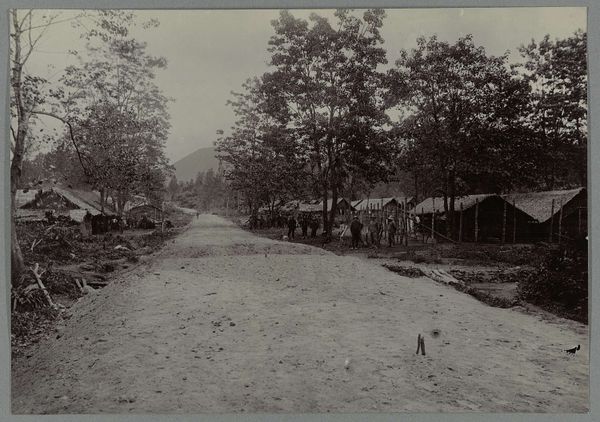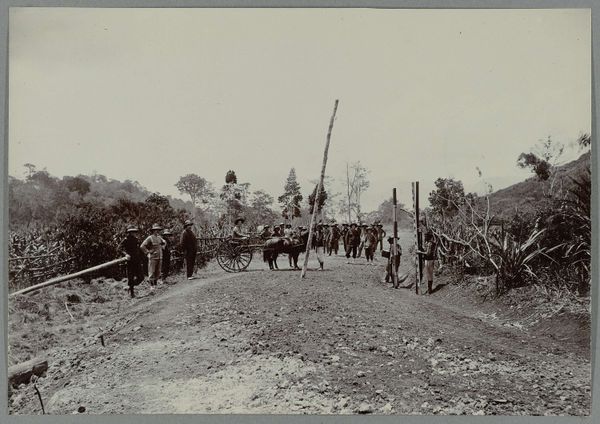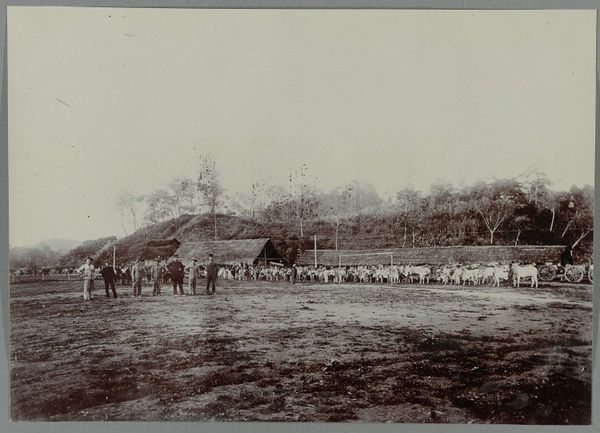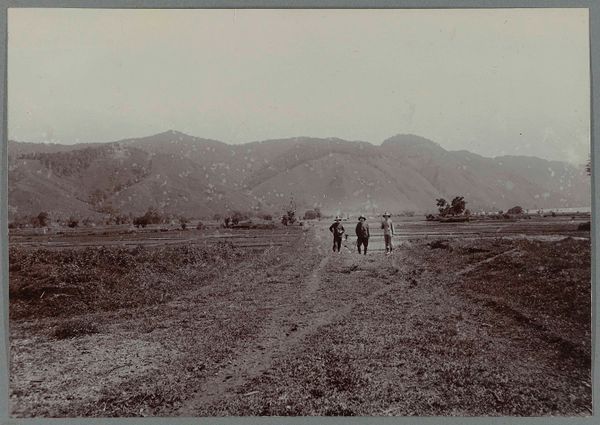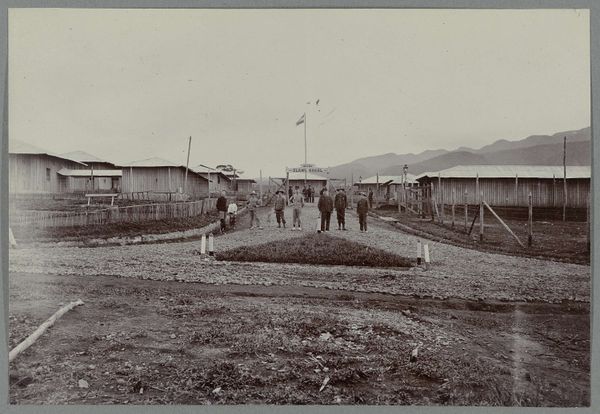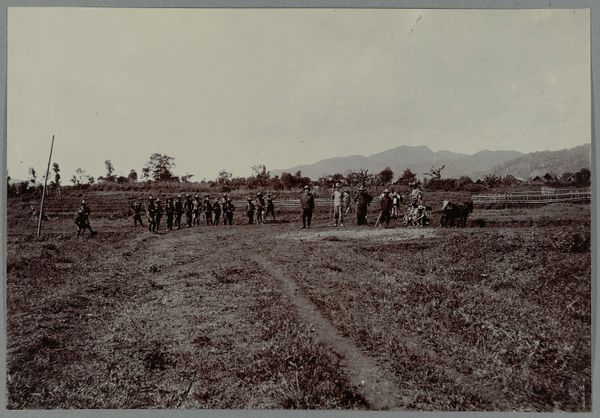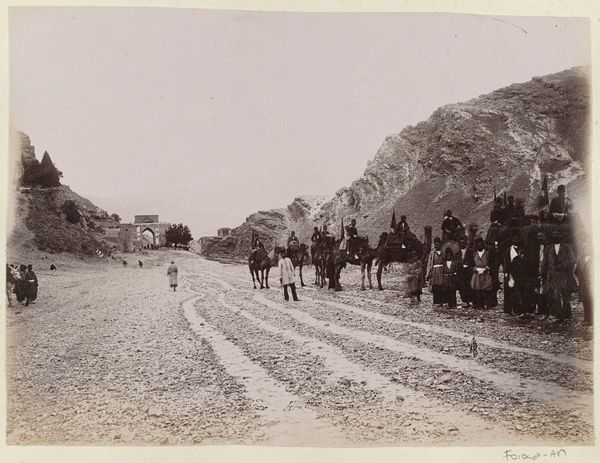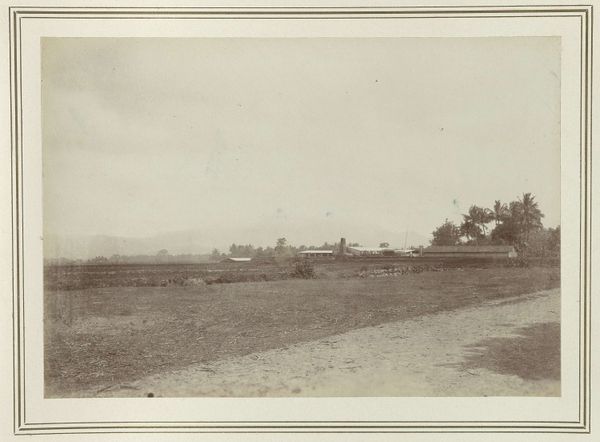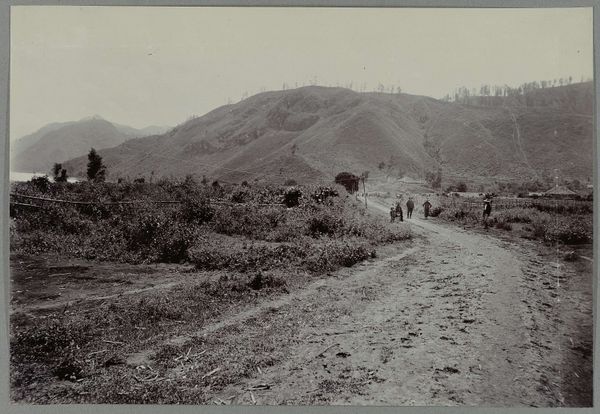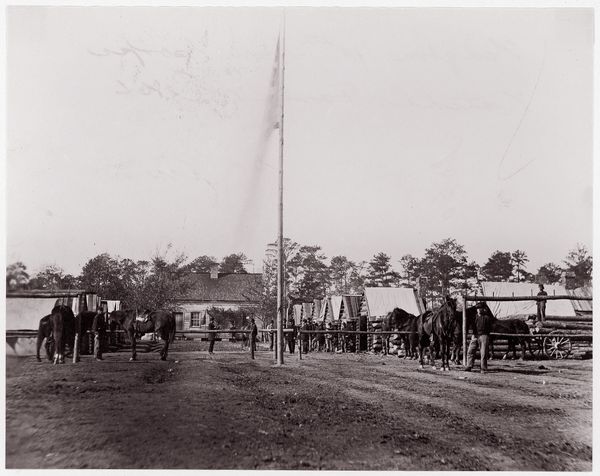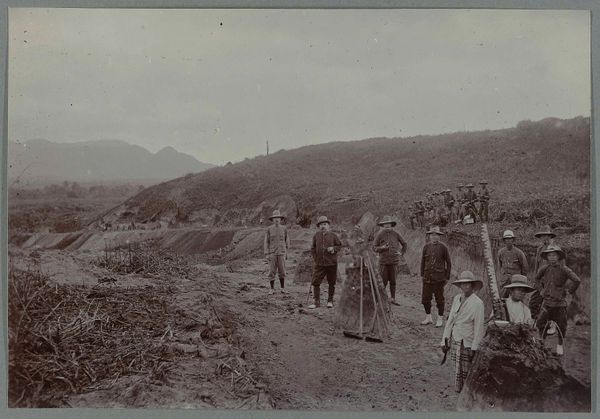
print, photography, albumen-print
#
natural tone
# print
#
countryside
#
landscape
#
outdoor photo
#
photography
#
orientalism
#
scenic spot
#
albumen-print
Dimensions: height 138 mm, width 200 mm
Copyright: Rijks Museum: Open Domain
Editor: We’re looking at an albumen print called “Tanoh Ilang gezien vanuit het bivak,” created sometime between 1903 and 1913. The artist is unknown. It's a faded photograph, a landscape showing what appears to be a military encampment in a rural setting. It gives me a feeling of distance and... almost voyeurism, as if we're peering into another world, another time. What strikes you most about this image? Curator: That feeling of peering, of observing, is precisely what captivates me too. There's a silence in this image, despite the obvious presence of people. Do you feel it? It whispers of untold stories, of lives lived and decisions made in this remote bivouac. It evokes, for me, a sort of liminal space – a temporary settlement, a moment suspended between journeys. It is a tangible fragment of a colonial narrative, rendered in delicate, faded sepia tones. It asks questions, doesn’t it? Questions about power, exploration, and the act of seeing itself. What do you imagine the soldiers' days consisted of? Editor: I imagine a lot of waiting, punctuated by moments of high tension. What is fascinating is seeing an outdoor photo capturing an important historic moment, giving a window into the past through this type of material - a photographic print, not so common nowadays. Curator: Exactly. That materiality, that tangible connection to the past, amplifies the emotional weight. You’re not just looking at a scene, you’re holding a fragment of history, susceptible to time. And isn't it intriguing how an 'anonymous' person created a visual record, layering multiple perspectives that intertwine cultural documentation and artistry? Editor: Absolutely. It makes you consider whose story is truly being told, and whose is being left out. Thank you for offering a richer understanding of how art can blend artistry with a critical, creative angle! Curator: And thank you for seeing with such inquisitive eyes. Art only lives when we breathe our own questions and reflections into it.
Comments
No comments
Be the first to comment and join the conversation on the ultimate creative platform.
